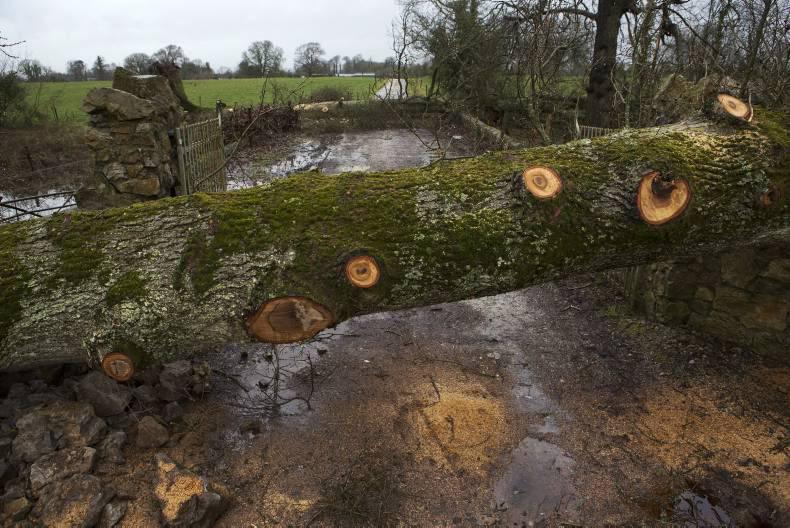Farms across the country are being battered by Storm Desmond this weekend with gusts of up to 120km/h forecast. The high winds are likely to change the landscape of many farm yards – tearing down century-old trees that once stood proudly.
These fallen trees may be a shocking sight but the state in which thousands of standing trees will be left is far more worrying.
When Storm Darwin hit us in 2014, bringing winds of up to 177km/h, Peter Varley spoke to John Nolan, from Parklawn Tree Services to get some advice for farmers dealing with storm damage to trees on the farm.
Nolan advises farmers to assess trees on their farm, especially on public roads. If a tree is on your land and falls across the public road, it is your responsibility.
How do you know if a tree is unstable?
The first step when making this decision is to take a look at the tree from a distance and study its appearance. Check and see if any branches have been broken and are still in the canopy.
Move closer to the tree and see if any major limbs are on the ground. If there are no obvious signs, have a look around the base of the tree at the root plate. If the earth around the root plate was disturbed or if there is a significant bulge around the roof plate the tree has become less stable and may need attention or felling. If a tree that was once straight now has a noticeable lean, it may need felling.
Take a look at where two limbs in a tree separate (the fork) and check if there are any noticeable cracks. If there is a crack, it might be a case that only one limb has to come down. For bigger cracks in the fork, the two limbs should be removed. Remedial action can be taken to prevent limbs coming apart.
Professional tree surgeons can brace limbs together before a storm to prevent them coming apart during high winds.
When dealing with a tree, the weight should always be taken off the target side (where the tree could do the most damage if it fell).
Some farmers after assessing a tree may think it is safe enough even if it is cracked.
Trees and power lines
Damaged trees in the vicinity of power lines can pose an extreme danger. If any work is being carried out around powerlines, the local authority or the ESB needs to be informed so electricity can be shut off. Every wire that you encounter should be deemed live.
Should I do the work myself or should I get the professionals in?
Using chainsaws and knocking trees is an extremely dangerous activity. It is inadvisable to carry out this type of work without any previous training.
Professional tree surgeons are the most qualified people to consult if you think a tree on your land is dangerous and they are the best people to take it down if needs be.
The cost of a reputable tree surgeon can vary depending on the job. Every job is different and various scenarios have to be taken into account when pricing a job.
John thinks it is foolish on a farmer’s part to go out and do this type of work themselves. He argues, “how do you put a price on an accident?”
When selecting a tree surgeon, make sure they have the necessary qualifications and insurance. The basic qualification a tree surgeon should have is a chainsaw ticket. John says you should go a step higher and select a professional with a CS of 40 or higher.
Tree surgeons should have the basic protection equipment, eg chainsaw trousers; ear muffs; hard hat and face visor and steel toe boots. But they also have more specialised equipment, including climbing gear, hoists, winches, etc.
Read more: Storm Desmond wreaks havoc on the country's power lines






 This is a subscriber-only article
This is a subscriber-only article











SHARING OPTIONS: